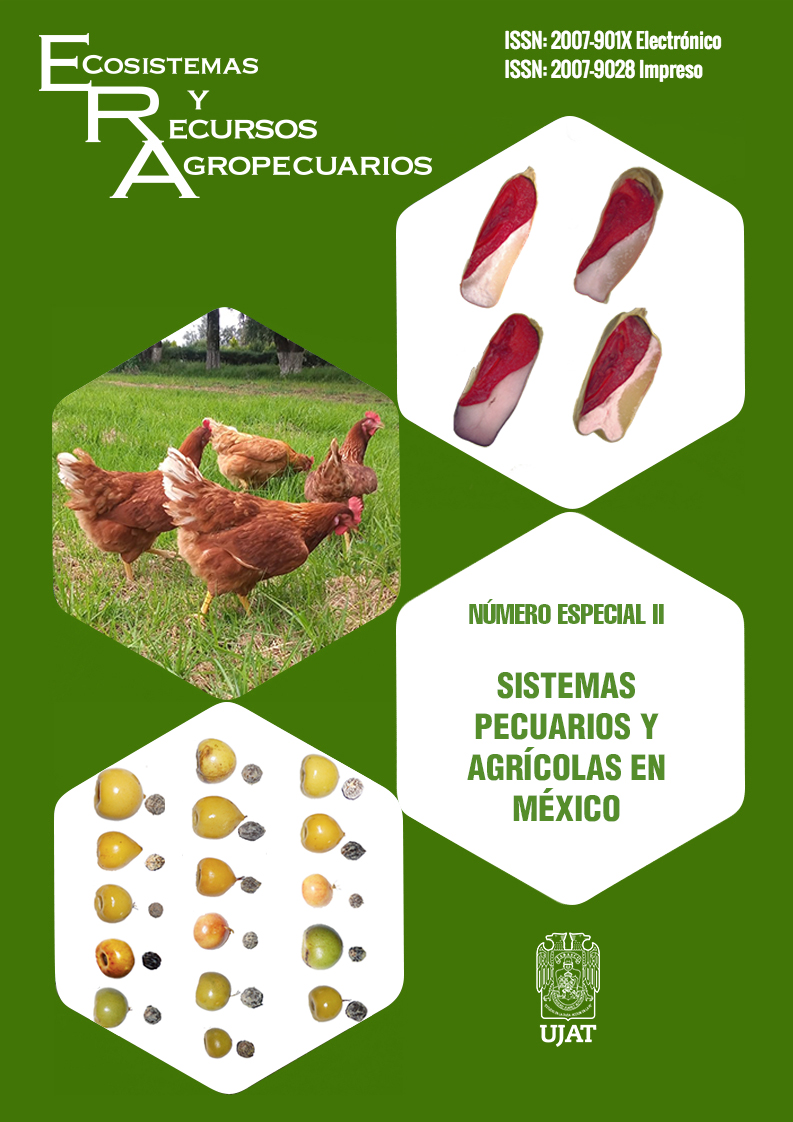Nutritional composition of six tropical grasses from the state of Jalisco, Mexico
DOI:
https://doi.org/10.19136/era.a8nII.2938Abstract
The objective of this study was to evaluate the chemical composition of six forage grasses for the Mexican wet and dry tropics: Andropogon gayanus, Andropogon gerardii, Cenchrus ciliaris, Chloris gayana, Megathyrsus maximus and Urochloa brizantha. Samples were collected on November 2019, in Tonaya, Jalisco, Mexico. Dry matter, ashes, crude protein (total and insoluble), ether extract, neutral detergent fiber, acid detergent fiber, hemicellulose, lignin and cellulose were determined. The evaluation was carried out at the Animal Nutrition Laboratory, Animal Science Department, Chapingo Autonomous University, Texcoco, State of Mexico. Each grass was evaluated, in triplicate, and each replicate was considered the experimental unit. Means of chemical composition were separated by the Tukey test (p < 0.05). The correlation between each pair of variables was estimated by the Pearson coefficient (p < 0.05). The higher the percentage of total protein (p < 0.05), the lower the percentage of ether extract and the higher the percentages of ashes and insoluble protein. Furthermore, the higher the percentage of insoluble protein, the lower the percentage of lignin (p < 0.05). Probably, protein concentrates in its insoluble fraction at the expense of ether extract and lignin. Consequently, great-blue-stem (Andropogon gerardii) showed high total protein (10.27%) and ashes (7.88%), and low percentages of lignin (5.23%) and ether extract (1.37%); but its insoluble protein was not as high (2.06%) as that of guinea grass (Megathyrsus maximus) (6.08%). Therefore, great-blue-stem had the best nutritional content at 35 días of regrowth.
Downloads
Downloads
Published
Issue
Section
License
Copyright (c) 2021 Ecosistemas y Recursos Agropecuarios

This work is licensed under a Creative Commons Attribution-NonCommercial-ShareAlike 4.0 International License.
Aviso de copyright
Los autores que se envían a esta revista aceptan los siguientes términos:
una. Los autores conservan los derechos de autor y garantizan a la revista el derecho a ser la primera publicación del trabajo con una licencia de atribución de Creative Commons que permite a otros compartir el trabajo con un reconocimiento de la autoría del trabajo y la publicación inicial en esta revista.
B. Los autores pueden establecer acuerdos complementarios separados para la distribución no exclusiva de la versión del trabajo publicado en la revista (por ejemplo, en un repositorio institucional o publicarlo en un libro), con un reconocimiento de su publicación inicial en esta revista.
C. Se permite y se anima a los autores a difundir su trabajo electrónicamente (por ejemplo, en repositorios institucionales o en su propio sitio web) antes y durante el proceso de envío, ya que puede conducir a intercambios productivos, así como a una cita más temprana y más extensa del trabajo publicado. (Consulte El efecto del acceso abierto).


